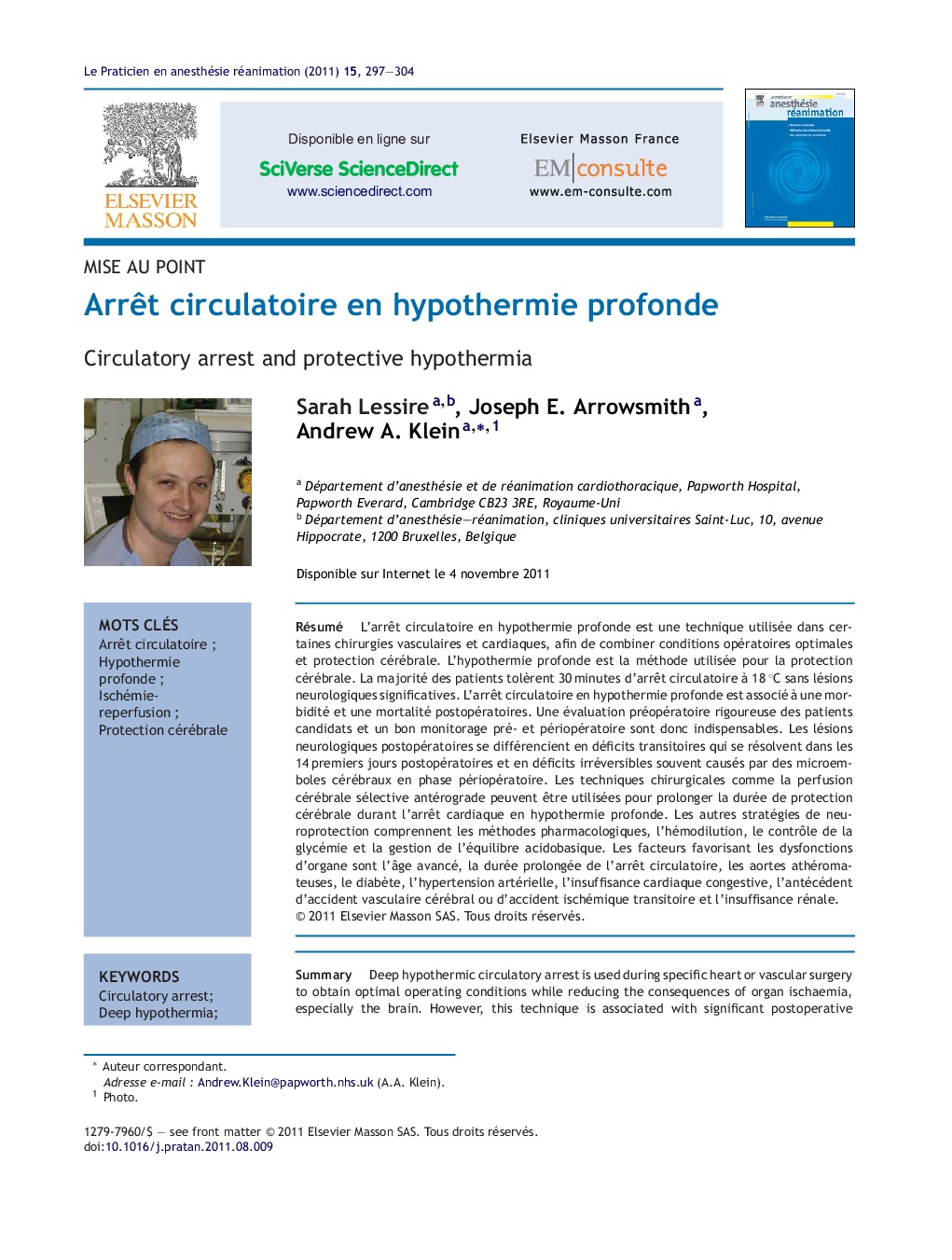| کد مقاله | کد نشریه | سال انتشار | مقاله انگلیسی | نسخه تمام متن |
|---|---|---|---|---|
| 2612759 | 1134795 | 2011 | 8 صفحه PDF | دانلود رایگان |
عنوان انگلیسی مقاله ISI
Arrêt circulatoire en hypothermie profonde
دانلود مقاله + سفارش ترجمه
دانلود مقاله ISI انگلیسی
رایگان برای ایرانیان
کلمات کلیدی
موضوعات مرتبط
علوم پزشکی و سلامت
پزشکی و دندانپزشکی
بیهوشی و پزشکی درد
پیش نمایش صفحه اول مقاله

چکیده انگلیسی
Deep hypothermic circulatory arrest is used during specific heart or vascular surgery to obtain optimal operating conditions while reducing the consequences of organ ischaemia, especially the brain. However, this technique is associated with significant postoperative morbidity and mortality and requires thorough preoperative assessment and careful perioperative monitoring. The aim of this article is to review the patophysiology of ischemic brain injury, the different aspects of cerebral protection, perioperative monitoring and postoperative care. Neurological complications associated with the use of deep hypothermic circulatory arrest consist of two types of injury: temporary neurological dysfunction which resolves within the 14Â days or irreversible cerebral ischaemic injury, often related to perioperative emboli. There is an increasing incidence of organ dysfunction due, in part, to older patients, long periods of deep hypothermic circulatory arrest, atherosclerotic aorta, hypertension, congestive heart disease, diabetes, previous stroke and chronic renal failure. Different techniques of cerebral protection include deep hypothermia, the use of retrograde cerebral perfusion or selective antegrade cerebral perfusion, pharmacological neuroprotection, haemodilution, glycaemic control and acid-base management.
ناشر
Database: Elsevier - ScienceDirect (ساینس دایرکت)
Journal: Le Praticien en Anesthésie Réanimation - Volume 15, Issue 5, October 2011, Pages 297-304
Journal: Le Praticien en Anesthésie Réanimation - Volume 15, Issue 5, October 2011, Pages 297-304
نویسندگان
Sarah Lessire, Joseph E. Arrowsmith, Andrew A. Klein,